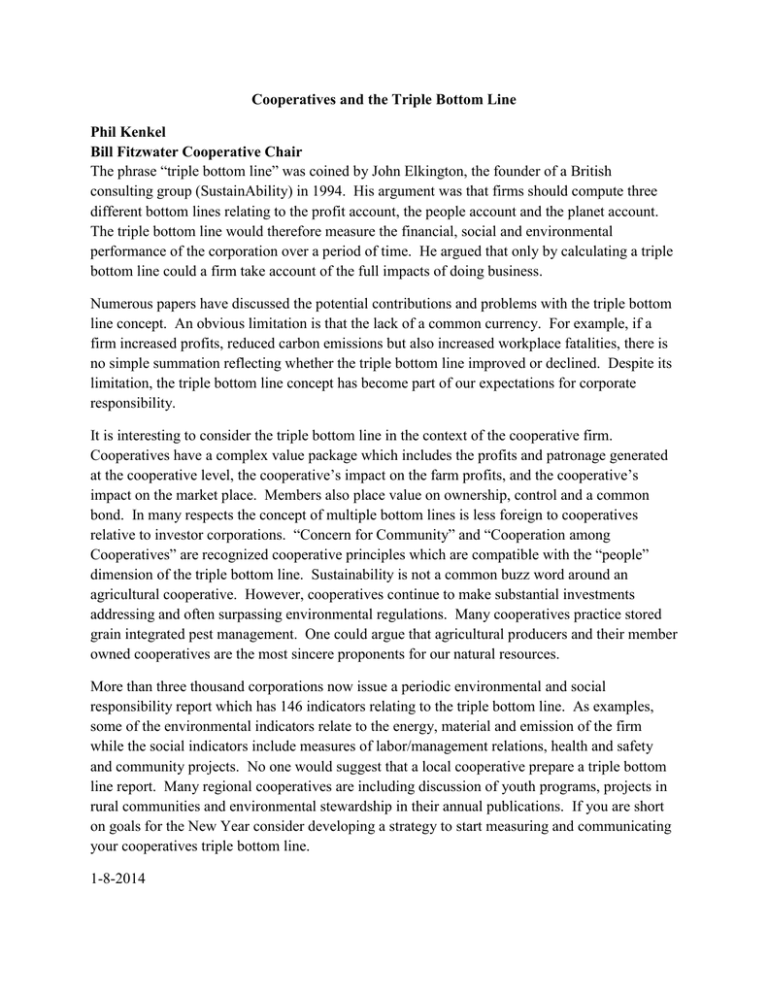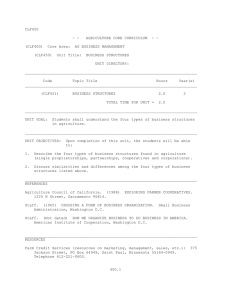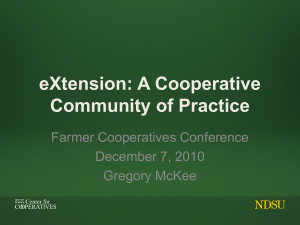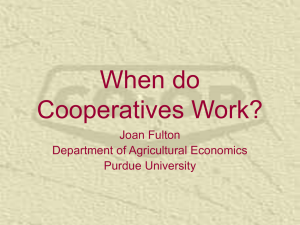Cooperatives and the Triple Bottom Line Phil Kenkel Bill Fitzwater Cooperative Chair
advertisement

Cooperatives and the Triple Bottom Line Phil Kenkel Bill Fitzwater Cooperative Chair The phrase “triple bottom line” was coined by John Elkington, the founder of a British consulting group (SustainAbility) in 1994. His argument was that firms should compute three different bottom lines relating to the profit account, the people account and the planet account. The triple bottom line would therefore measure the financial, social and environmental performance of the corporation over a period of time. He argued that only by calculating a triple bottom line could a firm take account of the full impacts of doing business. Numerous papers have discussed the potential contributions and problems with the triple bottom line concept. An obvious limitation is that the lack of a common currency. For example, if a firm increased profits, reduced carbon emissions but also increased workplace fatalities, there is no simple summation reflecting whether the triple bottom line improved or declined. Despite its limitation, the triple bottom line concept has become part of our expectations for corporate responsibility. It is interesting to consider the triple bottom line in the context of the cooperative firm. Cooperatives have a complex value package which includes the profits and patronage generated at the cooperative level, the cooperative’s impact on the farm profits, and the cooperative’s impact on the market place. Members also place value on ownership, control and a common bond. In many respects the concept of multiple bottom lines is less foreign to cooperatives relative to investor corporations. “Concern for Community” and “Cooperation among Cooperatives” are recognized cooperative principles which are compatible with the “people” dimension of the triple bottom line. Sustainability is not a common buzz word around an agricultural cooperative. However, cooperatives continue to make substantial investments addressing and often surpassing environmental regulations. Many cooperatives practice stored grain integrated pest management. One could argue that agricultural producers and their member owned cooperatives are the most sincere proponents for our natural resources. More than three thousand corporations now issue a periodic environmental and social responsibility report which has 146 indicators relating to the triple bottom line. As examples, some of the environmental indicators relate to the energy, material and emission of the firm while the social indicators include measures of labor/management relations, health and safety and community projects. No one would suggest that a local cooperative prepare a triple bottom line report. Many regional cooperatives are including discussion of youth programs, projects in rural communities and environmental stewardship in their annual publications. If you are short on goals for the New Year consider developing a strategy to start measuring and communicating your cooperatives triple bottom line. 1-8-2014



